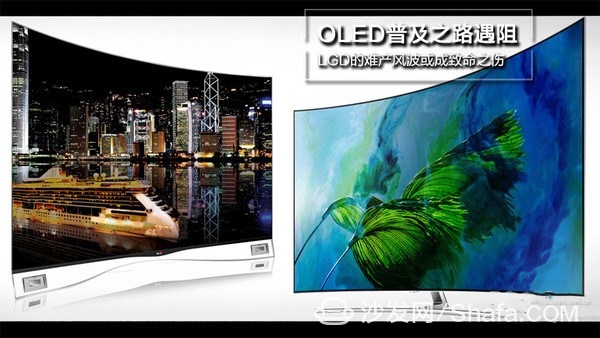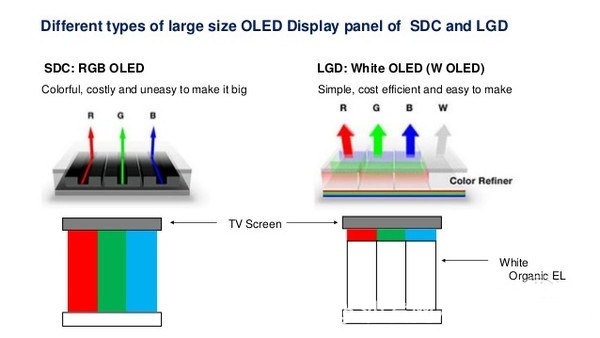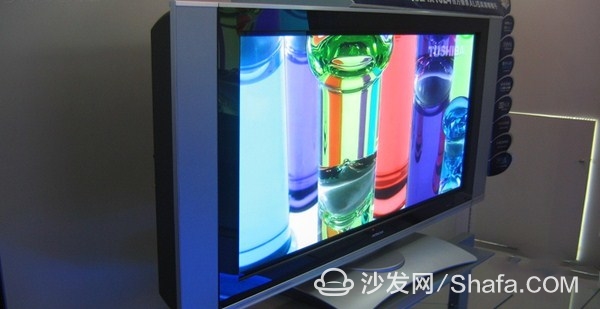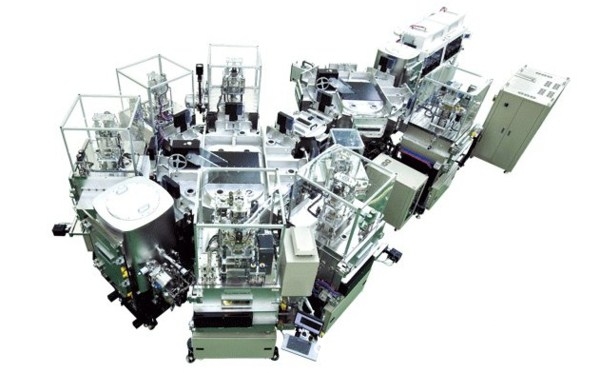
However, large-size OLED panels do not have the illusion of smooth sailing. Under the constraints of technology, large-screen OLEDs still face many problems, the cost remains high, and the layout of the large-screen OLED industry goes very slowly. This time, the rumors of LGD China's construction of the rumors broke, it also corroborates the difficulties of large-screen OLED development.
On the small-sized OLED panel, LGD faces fierce competition from Samsung Display. In fact, the first breakthrough is Samsung's development of small-size OLED display technology, the production cost of which even dropped to high-end LCD panel in 2016, and LGD does not seem to keep up with the rhythm in this regard. Samsung occupies over 90% of the market for small-size OLED screens.

Large screen OLEDs and small screen OLEDs actually use different technical routes. For example, Samsung's use of AMOLED on mobile phones and LG's use of large-size OLEDs on TVs are actually the differences between W-OLEDs and RGB-OLEDs. In general, RBG-OLED technology is more difficult, and the display effect is also better, but it is difficult to guarantee its lifetime due to technical limitations of more than 55 inches.
W-OLED is more like a product of technological compromises that deal with large screens. Its structure does not use OLED elements as RGB-OLED directly as red, green and blue primary colors. Instead, it allows OLED elements to create white sub-pixels that act as backlights and then add 4-color color filters to them. From a perfectionist point of view, it is a chicken thief using OLEDs on AH-IPS LCDs, and the display effect is too bad; from a practical point of view, it is definitely better than RBG-OLEDs in the large size range. The power saving and the life expectancy are also longer.
Although LGD adopted such a "lazy" technology, W-OLED's yield and capacity are still stretched. Although both Sony and Panasonic launched OLED TVs this year, they did not dare to completely bet on OLEDs as a test of new product lines. Samsung also departed from OLED TVs in 2013 and focused on QLED technology. By improving LCD TV backlighting methods, it achieved a breakthrough in picture quality. At this stage, it still seems to be higher in color and brightness than OLED TVs.
LGD alone is afraid of historyNo one dares to bet on the big screen OLED completely, because from the scale of the market, the cost advantage, the difference in the product can not see the absolute advantage of large-screen OLED contrast LCD. Its technical problems make it difficult to spread the market quickly, it is difficult to increase efficiency to reduce costs, and it is difficult to make differentiated products within a certain price range. We all know it is expensive.
In the event of a technical breakthrough in OLEDs, with new and improved products, or through vigorous marketing, people still lack the recognition of large-screen OLEDs as LCD TVs. Today's seemingly advanced products that are fully betting today may be Become a huge indigestible inventory.

It is not difficult to understand the entire industry's swaying attitude towards large-screen OLED TVs because relevant lessons have been engraved in history textbooks. Since its establishment in 2007, Changhong plasma business has continuously invested in and constructed plasma screens and module projects. Before the sale, it has invested more than 4 billion yuan in plasma projects. Only losses have been incurred year after year. Everyone is afraid that LGD will repeat the mistakes of Changhong Plasma. Therefore, the attitude towards large-screen OLEDs, including LGD, can only be prudent.
With the new iPhone screen orders and the urgent demand of more and more mobile phone manufacturers, Samsung AMOLED sees hope in advance; and even Sony Panasonic, and some Chinese TV manufacturers want to use LGD's OLED panel to test the high-end color TV market The attitude of the manufacturers is still uncertain, and the performance of the market is still calm.
OLED industry layout difficult SamsungLGD's layout in the OLED industry also lost to Samsung. The key equipment around OLED production is the evaporation machine. The core material is luminescent material. We look at the contest between Samsung and LG from these two aspects.
For luminescent materials, the luminescent materials of R3 in the three primary colors of OLEDs are supplied by Dow Chemical, 60% of G's luminescent materials are supplied by Samsung's SDI, and B's luminescent materials are provided by Japan's Idemitsu Takayama. Moreover, after these raw material manufacturers cooperated with Samsung, their sales have increased significantly. They all have strong dependence on Samsung. In 2013, Samsung’s SDI acquisition of Novaled in Germany was the most successful industrial layout and capital operation. Now LGD also needs to purchase luminous materials from Novaled.

In terms of evaporation equipment, Canon Tokki Co., Ltd., a Japan-based evaporation equipment manufacturer that has a large-scale mass production capacity worldwide, has achieved almost all orders for 2017 in Samsung (90% capacity) and BOE. LGD only Ordered from Canon Tokki to two 6-Gen deposition systems (important equipment for the production of OLED panels, each priced at approximately $115 million, which can support 15,000 monthly production capacity). It can be seen that LGD is now in the erotic position of the OLED industry.
Conclusion: OLED is one of the directions of display technology in the future, but LGD does not seem to use it well. For many years, it focused on the development of large-screen OLED industry. However, due to the slow technological breakthrough, the price has remained high and the market has experienced cold feedback. It also missed the best time to share dividends on mobile devices. What makes it all this is perhaps LGD's choice of "lazy" technology and its neglect of industrial layout. Many players on the road to the OLED industry are gaining momentum. Like Huaxing Optoelectronics, BOE, and Hon Hai (Sharp), their output is constantly rising. In the new starting line of OLED, LGD will face more and more opponents.
Smart TV/box information can focus on smart TV information network sofa butler (http://), China's influential TV box and smart TV website, providing information, communication, etc. on TV boxes, smart TVs, smart TV software, etc. Answering questions.
Three-phase current and voltage transducers are mainly used to isolate the measured
current and voltage signals and output one or two analog signals or digital signals.
Three Phase A/V Transducer,Three Phase Current Transducer,Three-Phase Ac/Dc Instrument Transducer,3 Phase Voltage Transducer
Jiangsu Sfere Electric Co., Ltd , https://www.elecnova-global.com